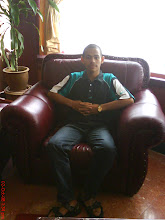News & Features
Media Advisory
NASA Schedules American Geophysical Union Meeting Media Events
NASA researchers will present new findings to the media on a wide range of Earth and space science topics during the 2007 Fall Meeting of the American Geophysical Union (AGU). The AGU meeting runs Monday, Dec. 10 through Friday, Dec. 14, at the Moscone Convention Center in San Francisco. All press briefings will take place in the AGU Press Room, Room 2010 of Moscone West at 747 Howard Street.
In addition to several press briefings highlighting results from NASA scientists, researchers also will present noteworthy findings during a variety of scientific sessions that are also open to registered media.
> NASA AGU Press Briefings
> NASA AGU Scientific Presentations
AGU Events
-

NASA Spacecraft Make New Discoveries About Northern Lights
THEMIS has made three important discoveries about spectacular eruptions of Northern Lights called "substorms" and the source of their power.
-

New Mars Orbiter Reveals Details of Canyon System and 'Spiders'
New images reveal that layered deposits inside Mars's Candor Chasma, part of the largest canyon system in the solar system, are younger than the Valles Marineris in which they're found.
-

Mars Rovers Survive the Dust, Follow the Water
Mars Rovers continue to add to evidence about water's role in past Martian environments.
-

Earth's 'Tipping Points': How Close Are We?
There is growing concern that our planet may be at a "tipping point" of dramatic climate change due to human factors.
-

Saturn's Recycling Rings
Ring sustainability and recycling will be discussed at this Cassini presentation.
-

The Secret Life of Clouds
Cloudsat is now yielding a treasure trove of new data that are helping scientists better understand the enormous influence clouds have on Earth's weather.
-

NASA Satellite Reveals Unprecedented View of Mysterious 'Night-Shining' Clouds
NASA's AIM satellite has provided the first global-scale, full-season view of iridescent polar clouds that form 50 miles above Earth’s surface.
-

Voyager 2 Proves the Solar System is Squashed
NASA's Voyager 2 spacecraft has followed Voyager 1 into the solar system's heliosheath, a vast region at the extreme edge of our solar system.
Related Features
-

NASA Hurricane Animation Improves Storm Damage Prediction
Thanks to student interns and NASA satellites forecasters will be able to predict overall storm damage more accurately.
-

NASA Study Reveals Less Water in Mars' Clouds
MOFFETT FIELD, Calif. – Martian clouds may contain less water than previously thought, according to a new NASA study.
-

NASA Scientists Assess the Possibilities of Water and Life on Enceladus
There is a chance that liquid water and maybe even a possibility life could exist on Saturn's moon, Enceladus, according to NASA scientists who are studying data from NASA's Cassini spacecraft.
-

NASA Scientists Predict Major Ecosystem Carbon Loss in Western States
There is a chance that liquid water and maybe even a possibility life could exist on Saturn's moon, Enceladus, according to NASA scientists who are studying data from NASA's Cassini spacecraft.

No comments:
Post a Comment